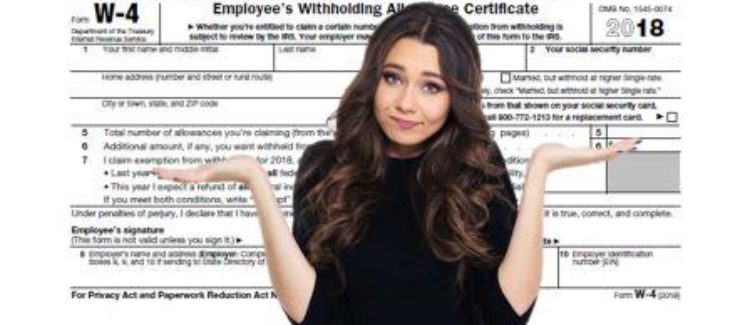The 2018 IRS Form W-4 Has Been Released. Now What Should Employers Do?

On February 28th, the IRS released the much-anticipated Form W-4 for 2018. The updated form incorporates changes based upon the Tax Cuts and Jobs Act legislation passed in December 2017 with a number of provisions that went into effect January 1, 2018, including an overhaul of the withholding tax brackets and percentages affecting payroll tax calculations as well as changes to the standard deduction amounts, child tax credits, removal of personal exemptions and applied limitations to or complete elimination of certain deductions. As with the release of any new forms from the IRS, there are often a lot of questions and anxiety around making sure the proper steps are taken to implement any necessary changes and ensure compliance. Here are a few that might come to mind:
Which employees need to complete the new 2018 Form W-4?
The new form should be used for all newly hired employees as part of your onboarding / new hire paperwork process. It should also be used by any existing employees looking to change their withholding allowances or exemption status.
We just hired a new employee last week, but used the old 2017 Form W-4. Do we need to have that employee complete the new 2018 Form W-4?
Based upon the IRS Notice 2018-4, use of the modified 2017 Form W-4 expires 30 days after the release of the new form. So long as you used the 2017 Form W-4 with the appropriate modifications on or before March 30, 2018, you are not required per se to have the employee complete a new form unless their withholding allowances or exemption status should be changed based upon the new withholding calculations or a change in circumstances. While you are not required to have the new employee complete the new form, it may be advisable as noted in the next section.
Do we need to have all of our existing employees complete the 2018 Form W-4?
It is not a requirement, but we highly recommend it and the IRS actually suggest promoting a “paycheck checkup” at the beginning of each year. You only need to have an existing employee complete the 2018 Form W-4 if they are changing their withholding allowances or exemption status. With the recent changes to the withholding calculations, taxpayers may find that they will end up withholding too much or not enough taxes at the end of the year if they are not continually reviewing their withholding allowances. This is particularly true for people who itemized deductions for past returns, two-or-more income families and/or taxpayers who have dependents. We recommend sending a communication to all employees that there is a new Form W-4 and if they want/need to make any changes to their withholding allowances or are now exempt to please submit an updated form.
Is there a way for employees to roughly calculate changes to their net pay based upon changes to their withholding allowances?
Yes, the IRS has a withholding calculator, which can be found here: Payroll Withholding Calculator. In the communication to your employees regarding the new Form W-4, you can include a link to this calculator to help them determine their withholding. Advise your employees that they will need to have a previous pay statement with their YTD earnings and Federal Tax Withholding amounts to enter into the calculator in order to receive accurate results.
What should I do if my employees ask for help completing the form?
Be sure to suggest that your employee speak with a tax professional for advice on the best option to suit their specific tax needs and family circumstances.
All these changes and new calculations for payroll taxes are confusing and we are worried about making errors that will result in fines and penalties from the IRS. What can we do?
You are right to be concerned as numerous businesses have suffered significant financial penalties and time-consuming consequences based upon simple errors made in manually attempting to calculate the correct employer and employee payroll tax withholding amounts each pay period. Civil Tax Penalties on Employment Taxes levied against employers for errors (broken down into the following categories: Accuracy, Bad Check, Delinquency, Estimated Tax, Failure to Pay, Federal Tax Deposits, Fraud and Other) jumped significantly from $4.96M in 2014 to $6.05M in 2016. Contact Checkmate today to request a quote on our payroll software and services and get peace of mind so you can focus on your business and your people.
Please
You may also be interested in our recent article regarding the release of the 2020 Form W4:
https://www.checkmatepayroll.com/the-new-2020-form-w-4-is-available-and-its-a-whole-lot-different/


